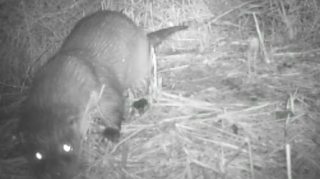Guest blogger: Darren Tansley, Essex Wildlife Trust
Otters are back after their near extinction in the 1970s, so why don't we see them more often?听

Otter by Roger Hance
Unfortunately across much of their range they are more active at night, and even a 1.2m long dog otter can swim past undetected on a dark river.
Nightwatch surveys, with infra-red cameras, are ideal to view these amazing animals in the wild, but expensive kit is not the only way to track their movements. Try contacting your local Wildlife Trust or mammal group for details of local otter surveys and training days. You鈥檒l be expected to get your nose into some otter spraints (droppings), but don鈥檛 be alarmed as they smell quite pleasant; sometimes being compared to the scent of jasmine tea.

Otter on Kirby Brook by Bob Seago
Otters also move along rivers in town centres, as their territories stretch several miles, but recent unseasonal flooding has driven them into some unusual locations, such as ditches, housing estates and garden ponds. With cubs being born in any season and depending on their mother for food, in winter she risks being knocked down while crossing busy roads to avoid flooded bridges.
But generally the future is bright and there has never been a better time to become an otter spotter.
The Wildlife Trusts -
听
